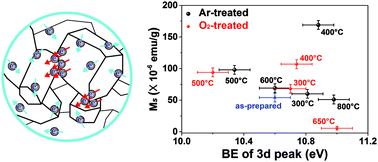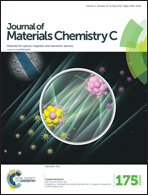Effect of surface configurations on the room-temperature magnetism of pure ZnO
Abstract
We unambiguously discovered the existence of room-temperature ferromagnetic-like behavior (RTFM) in pure ZnO pellets, which are made from the nanoparticles showing only paramagnetism and diamagnetism. In contrast to previous reports, our systematic work shows that thermal annealing of ZnO at different temperatures can either enhance or reduce ferromagnetic-like ordering regardless of post-treatment in argon and oxygen. After post-annealing under different conditions, the treated pellets show significant and complicated variation in surface configurations, including for example different levels of surface dehydrogenation, carbon adsorption, grain size and Zn/O ratio. The quantitative analysis indicates that the RTFM of ZnO is affected mainly by surface oxygen vacancies and hydrogenation. The observed dependence of intrinsic RTFM on the energy position of the Zn 3d photoemission peak suggests the presence of unpaired electrons leading to vacancy-mediated ferromagnetism. On the other hand, we also found that the RTFM of ZnO can be easily modified by adsorbed species, which give rise to charge-transfer at the surface. Based on this result, we further identified that surface carbon contamination is a potential source for the reported controversies, related to poor reproducibility of experimental results in the area of so-called d0 ferromagnetism.


 Please wait while we load your content...
Please wait while we load your content...